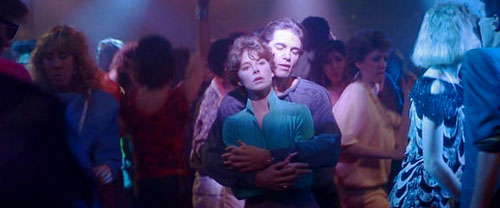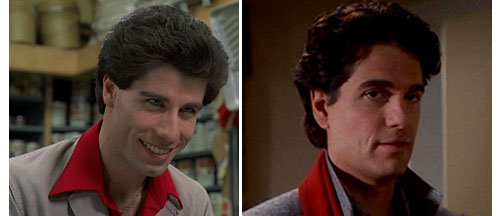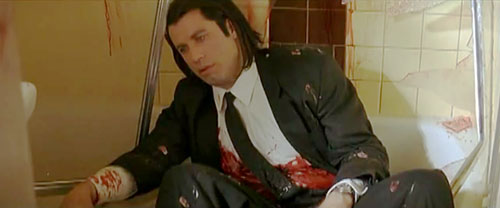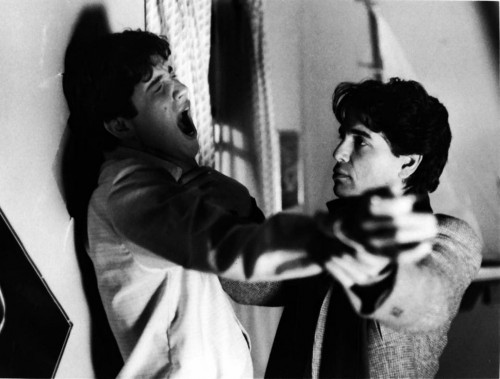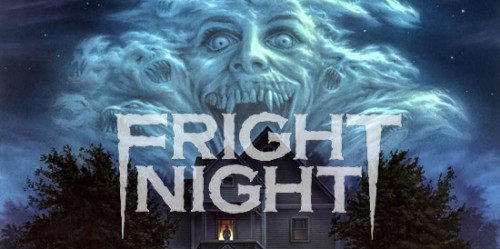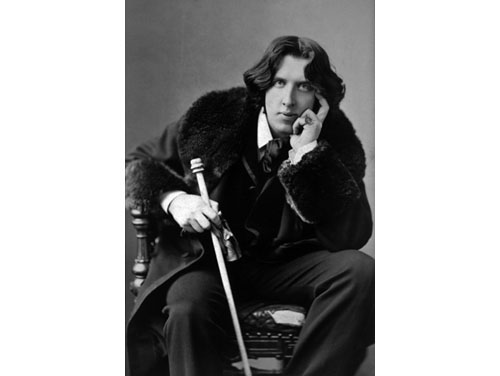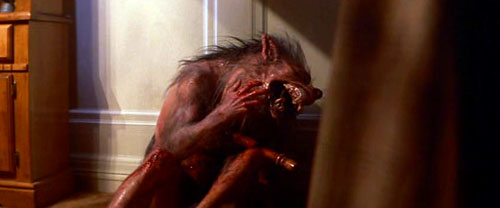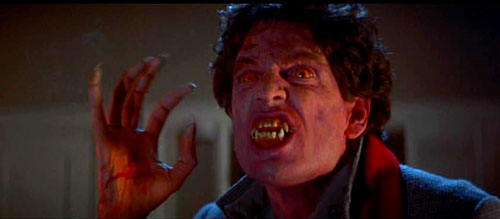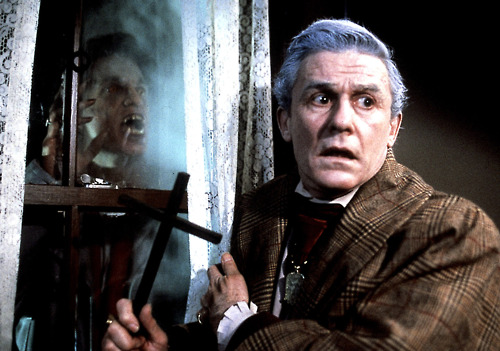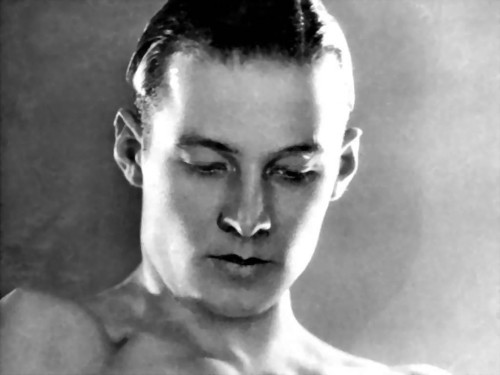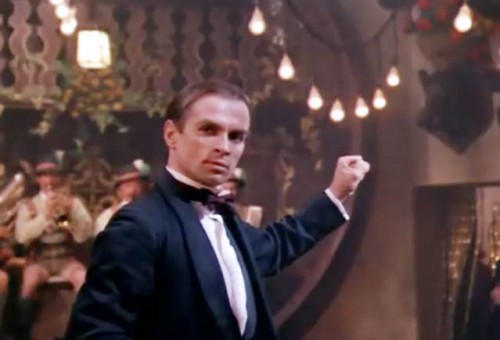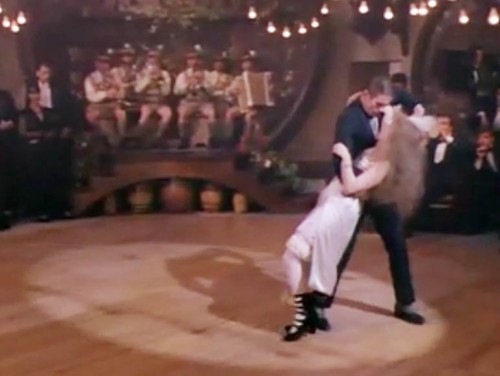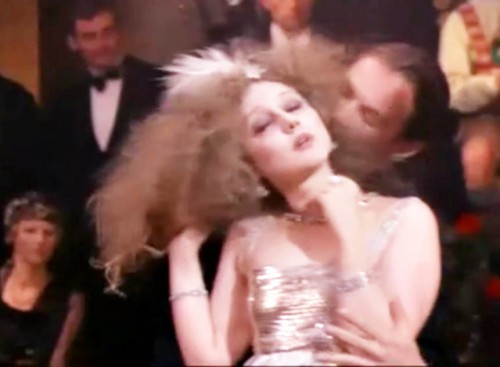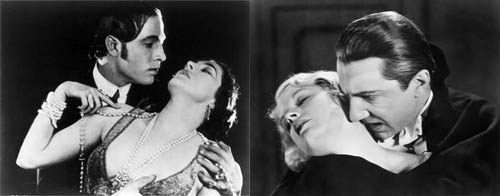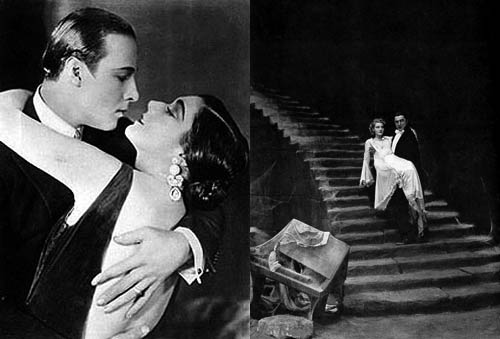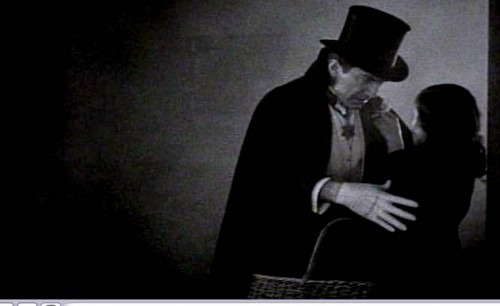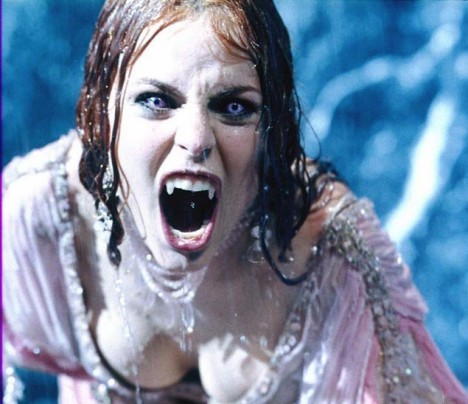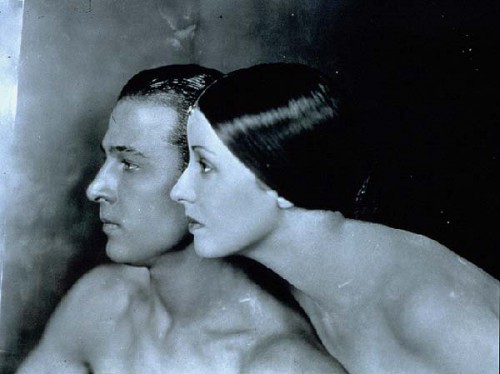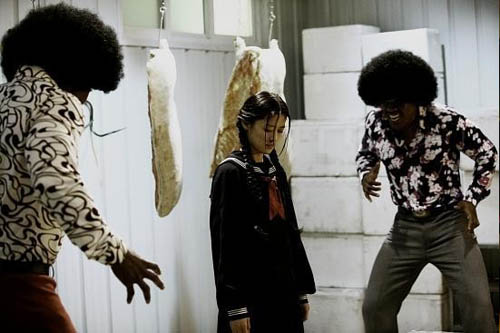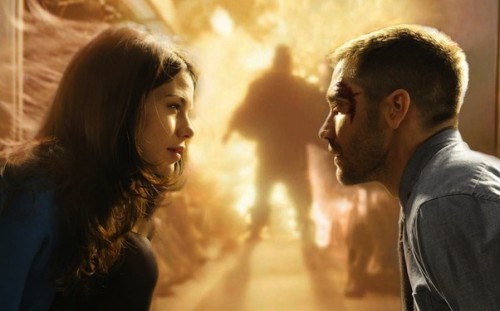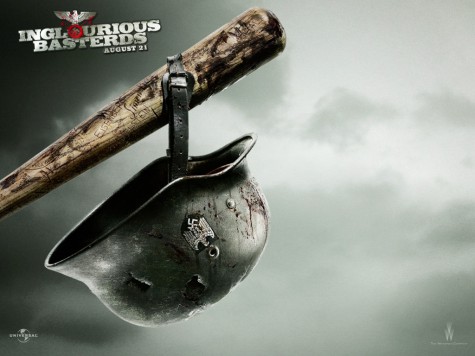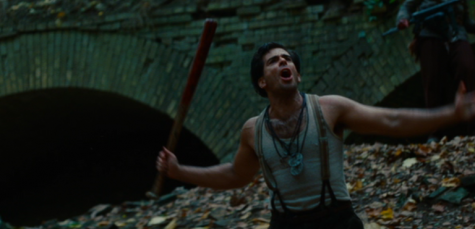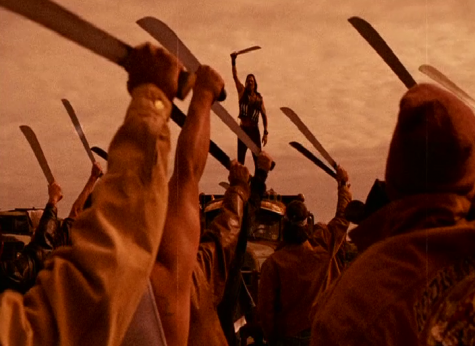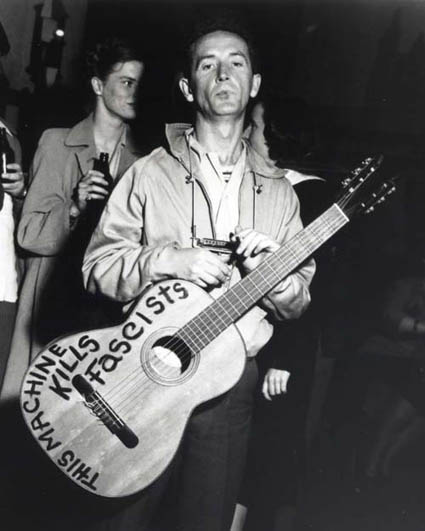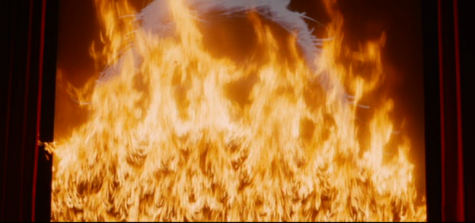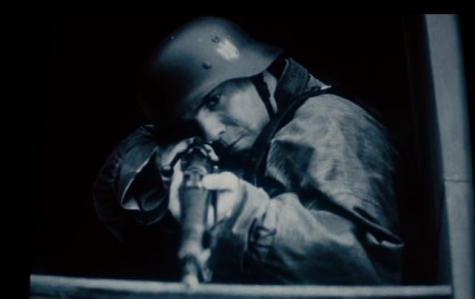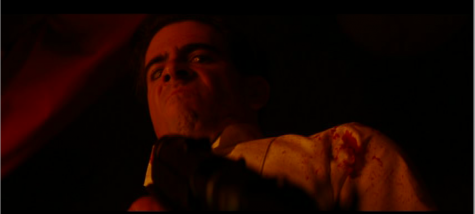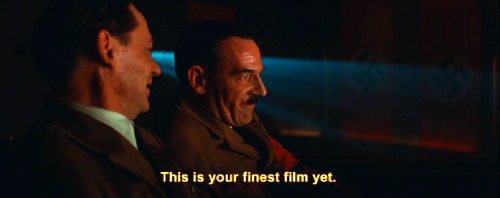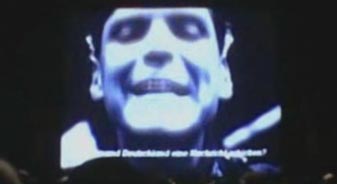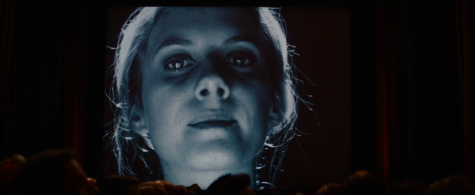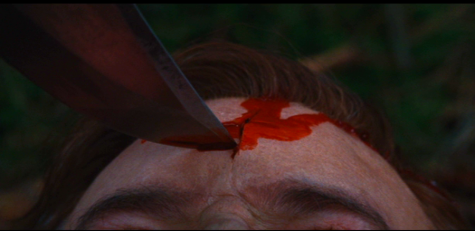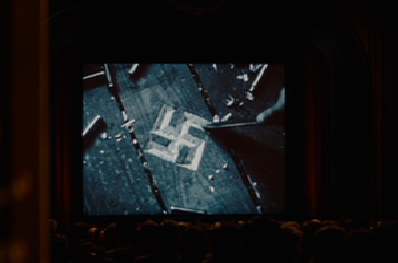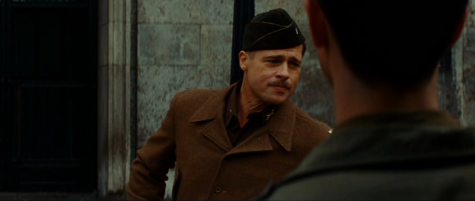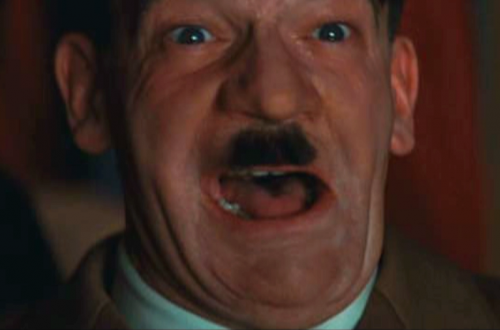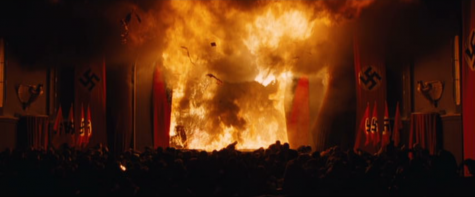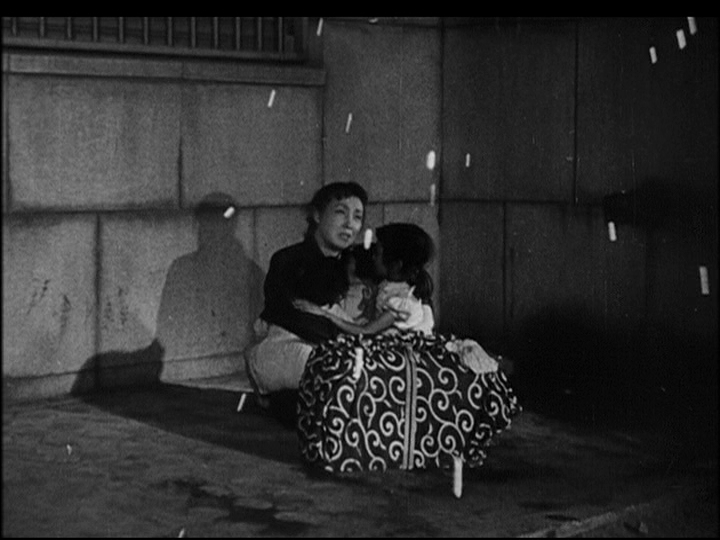Il n’y a pas de hors-texte. If post-structuralism has had a motto—a proverb and quotable provocation—then surely it is this, from Derrida’s Of Grammatology. Text has no outside. There is nothing outside the text. It is tempting to put a conventionally Kantian construction on these words—to see them, I mean, as bumping up against an old epistemological barrier: Our thinking is intrinsically verbal—in that sense, textual—and it is therefore impossible for our minds to get past themselves, to leave themselves behind, to shed words and in that shedding to encounter objects as they really are, in their own skins, even when we’re not thinking them, plastering them with language, generating little mind-texts about them. But this is not, in fact, what the sentence says. Derrida’s claim would seem to be rather stronger than that: not There are unknowable objects outside of text, but There are outside of text no objects for us to know. So we reach for another gloss—There is only text … ain’t nothing but text—except the sentence isn’t really saying that either, since to say that there is nothing outside text points to the possibility that there is, in a manner yet to be explained, something inside text, and this something would not itself have to be text, any more than caramels in a carrying bag have to be made out of cellophane.
So we look for another way into the sentence. An alternate angle of approach would be to consider the claim’s implications in institutional or disciplinary terms. The text has no outside is the sentence via which English professors get to tell everyone else in the university how righteously important they are. No academic discipline can just dispense with language. Sooner or later, archives and labs and deserts will all have to be exited. The historians will have to write up their findings; so will the anthropologists; so will the biochemists. And if that’s true, then it will be in everyone’s interest to have around colleagues who are capable of reflecting on writing—literary critics, philosophers of language, the people we used to call rhetoricians—not just to proofread the manuscripts of their fellows and supply these with their missing commas, but to think hard about whether the language typically adopted by a given discipline can actually do what the discipline needs it to do. If the text has no outside, then literature professors will always have jobs; the idea is itself a kind of tenure, since it means that writerly types can never safely be removed from the interdisciplinary mix. The idea might even establish—or seek to establish—the institutional primacy of literature programs. Il n’y a pas de hors-texte. There is nothing outside the English department, since every other department is itself engaged in a more or less literary endeavor, just one more attempt to make the world intelligible in language.
Such, then, is the interest of Quentin Meillassoux’s After Finitude, first published in French in 2006. It is the book that, more than any other of its generation, means to tell the literature professors that their jobs are not, in fact, safe. Against Derrida it banners a counter-slogan of its own: ““it could be that contemporary philosophers have lost the great outdoors, the absolute outside.” It is Meillassoux’s task to restore to us what he is careful not to call nature, to lead post-structuralists out into the open country, to make sure that we are all getting enough fresh air. Meillassoux means, in other words, to wean us from text, and for anyone beginning to experience a certain eye-strain, a certain cramp of the thigh from not having moved all day from out his favorite chair, this is bound to be an appealing prospect, though if you end up unconvinced by its arguments—and there are good reasons for doubt, as the book amounts to a tissue of misunderstanding and turns, finally, on one genuinely arbitrary prohibition—then it’s all going to end up sounding like a bullying father enrolling his pansy son in the Boy Scouts against his will: Get your head out of that book! Why don’t you go in the yard and play?!
• • •
Of course, Meillassoux’s way of getting the post-structuralists to go hiking with him is by telling them which books to read first. If you start scanning After Finitude’s bibliography, what will immediately stand out is its programmatic borrowing from seventeenth- and early eighteenth-century philosophers. Meillassoux regularly cites Descartes and poses anew the question that once led to the cogito, but will here lead someplace else: What is the one thing I as a thinking person cannot disbelieve even from the stance of radical doubt? He christens one chapter after Hume and proposes, as a knowing radicalization of the latter’s arguments, that we think of the cosmos as “acausal.” In the final pages, Galileo steps forward as modern philosophy’s forgotten hero. His followers are given to saying that Meillassoux’s thinking marks out a totally new direction in the history of philosophy, but I don’t think anyone gets to make that kind of claim until they have first drawn up an exhaustive inventory of debts. At one point, he praises a philosopher publishing in the 1980s for having “written with a concision worthy of the philosophers of the seventeenth century.” That’s one way to get a bead on this book—that it resurrects the Grand Siècle as a term of praise. The movement now coalescing around Meillassoux—the one calling itself speculative realism—is a bid to get past post-structuralism by resurrecting an ante-Kantian, more or less baroque ontology, on the understanding that nearly all of European philosophy since the first Critique can be denounced as one long prelude to Derrida. There never was a “structuralism,” but only “pre-post-structuralism.”
Meillassoux, in sum, is trying to recover the Scientific Revolution and early Enlightenment, which wouldn’t be all that unusual, except he is trying to do this on radical philosophy’s behalf—trying, that is, to get intellectuals of the Left to make their peace with science again, as the better path to some of post-structuralism’s signature positions. His argument’s reliance on early science is to that extent instructive. One of the most appealing features of Meillassoux’s writing is that it restages something of the madness of natural philosophy before the age of positivism and the research grant; it retrieves, paragraph-wise, the sublimity and wonder of an immoderate knowledge. In 1712, Richard Blackmore published an epic called Creation, which you’ve almost certainly never heard of but which remained popular in Britain for several decades. That poem tells the story of the world’s awful making, before humanity’s arrival, and if you read even just its opening lines, you’ll see that this conception is premised on a rather pungent refusal of Virgil and hence on a wholesale refurbishing of the epic as genre: “No more of arms I sing.” Blackmore reclassifies what poets had only just recently been calling “heroic verse” as “vulgar”; the epic, it would seem, has degenerated into bellowing stage plays and popular romances and will have to learn from the astrophysicists if it is to regain its loft and dignity. Poets will have to accompany the natural philosophers as they set out “to see the full extent of nature” and to tally “unnumbered worlds.” The point is that there was lots of writing like this in the eighteenth century, and that it was aligned for the most part with the period’s republicans and pseudo-republicans and whatever else England had in those years instead of a Left. This means that the cosmic epic was to some extent a mutation of an early Puritan culture, a way of carrying into the eighteenth earlier trends in radical Protestant writing, and especially the latter’s Judaizing or philo-Semitic strains. The idea here was that Hebrew poetry provided an alternative model to Greek and Roman poetry: a sublime, direct poetry of high emotion, of inspiration, ecstasy, and astonishment. The Creation is one of the things you could read if you wanted to figure out how ordinary people ever came to care about science—how science was made into something that could turn a person on—and what you’ll find in its pages is a then new aesthetic that is equal parts Longinus and Milton, or rather Longinus plus Moses plus Milton plus Newton, and not a Weberian or Purito-rationalist Newton, but a Newton supernal and thunder-charged, in which the Principia is made to yield science fiction. It is, finally, this writing that Meillassoux is channeling when he asks us—routinely—to contemplate the planet’s earliest, not-yet-human eons; when, like a boy-intellectual collecting philosophical trilobites, he demands that our minds be arrested by the fossil record or that all of modern European philosophy reconfigure itself to accommodate the dinosaurs. And it is the eighteenth-century epic’s penchant for firebolt apocalyptic that echoes in his descriptions of a cosmos beyond law:
Everything could actually collapse: from trees to stars, from stars to laws, from physical laws to logical laws; and this not by virtue of some superior law whereby everything is destined to perish, but by virtue of the absence of any superior law capable of preserve anything, no matter what, from perishing.
Meillassoux’s followers call this an idea that no-one has ever had before. The epic poets once called it Strife.
That so many readers have discovered new political energies in Meillassoux’s argument is perhaps hard to see, since the book contains absolutely nothing that would count, in any of the ordinary senses, as political thought. There are, it’s true, a few passages in which Meillassoux lets you know he thinks of himself as a committed intellectual: a (badly underdeveloped) account of ideology critique; the faint chiming, in one sentence, of The Communist Manifesto; a few pages in tribute to Badiou. With a little effort, though, the political openings can be teased out, and they are basically twofold: 1) Meillassoux says that thought’s most pressing task is to do justice to the possibility—or, indeed, to the archaic historical reality—of a planet stripped of its humans. On at least one occasion, he even uses, in English translation, the phrase “world without us.” For anyone looking to devise a deep ecology by non-Heideggerian means—and there are permanent incentives to reach positions with as little Heidegger as possible—Meillassoux’s thinking is bound to be attractive. The book is an entry, among many other such, in the competition to design the most attractive anti-humanism. 2) The antinomian language in the sentence last quoted—laws could collapse; there is no superior law—or, indeed, the very notion of a cosmos structured only by unnecessary laws—is no doubt what has drawn to this book those who would otherwise be reading Deleuze, since Meillassoux, like this other, has designed an ontology to anarchist specifications, though he has done so, rather surprisingly, without Spinoza. Another world is possible wasn’t Marx’s slogan—it was Leibniz’s—except at this level, it has to be said, the book’s politics remain for all intents and purposes allegorical. Meillassoux’s argument operates at most as a peculiar, quasi-theological reassurance that if we set out to change the political and legal order of our nation-states, the universe will like it.
Maybe this is already enough information for us to see that After Finitude’s relationship to post-structuralism is actually quite complicated. Any brief description of the book is going to have to say that it is out to demolish German Idealism and post-structuralism and any other philosophy of discourse or mind. But if we take a second pass over After Finitude, we will have to conclude that far from flattening these latter, its chosen task is precisely to shore them up, to move anti-foundationalism itself onto sturdy ontological foundations. Meillassoux’s niftiest trick, the one that having mastered he compulsively performs, is the translating of post-structuralism’s over-familiar epistemological claims into fresh-sounding ontological ones. What readers of Foucault and Lyotard took to be claims about knowledge turn out to have been claims about Being all along, and it is through this device that Meillassoux will preserve what he finds most valuable in the radical philosophy of his parents’ generation: its anti-Hegelianism, its hard-Left anti-totalitarianism, its attack on doctrines of necessity, its counter-doctrine of contingency, its capacity for ideology critique.
Adorno was arguing as early as the mid-‘60s that thought needed to figure out some impossible way to think its other, which is the unthought, “objects open and naked,” the world out of our clutches. “The concept takes as it most pressing business everything it cannot reach.” Is it possible to devise “cognition on behalf of the non-conceptual”? This is the sense in which Meillassoux, far from breaking with post-structuralism and its cousins, is simply answering one of its central questions. It’s just that he does so in a way that any convinced Adornian or Left Heideggerian is going to find baffling. Cognition on behalf of the non-conceptual turns out to have been right in front of us all along—it is called science and math. Celestial mechanics has always been the better anti-humanism. A philosophical anarchism that has thrown its lot in with the geologists and not with the Situationists—that is the possibility for thought that After Finitude opens up. The book, indeed, sometimes seems to be borrowing some of Heidegger’s idiom of cosmic awe, but it separates this from the latter’s critique of science—such that biology and chemistry and physics can henceforth function as vehicles of ontological wonder, astonishment at the world made manifest. And with that idea there comes to an end almost a century’s worth of radical struggle against domination-through-knowledge, against bureaucracy, rule by experts, the New Class, technocracy, instrumental reason, and epistemological regimes. On the back cover of After Finitude, Bruno Latour says that Meillassoux promises to “liberate us from discourse,” but that’s not exactly right and may be exactly wrong. He wants rather to free us from having to think of discourse as a problem—precisely not to rally us against it, in the manner of Adorno and Foucault—but to license us to make our peace with, and so sink back into, it.
• • •
Lots of people will find good reasons to take this book seriously. It is, nonetheless, unconvincing on five or six fronts at once.
•It is philosophically conniving. There are almost no empirical constraints placed on the argumentative enterprise of ontology. Nothing in everyday experience is ever going to suggest that one generalized account of all Being is right and another wrong, and this situation will inevitably grant the philosopher latitude. Ontologies will always be tailored to extra-philosophical considerations, any one of them elected only because a given thinker wants something to be true about the cosmos. Explanations of existence are all speculative and in that sense opportunistic. It is this opportunism we sense when we discover Meillassoux baldly massaging his sources. Here he is on p. 38: “Kant maintains that we can only describe the a priori forms of knowledge…, whereas Hegel insists that it is possible to deduce them.” Kant, we are being told, doesn’t think the categories are deducible. And then here’s Meillassoux on pp. 88 and 89: “the third type of response to Hume’s problem is Kant’s … objective deduction of the categories as elaborated in the Critique of Pure Reason.”
•The leap from epistemology to ontology sometimes falls short. At one point, Meillassoux thinks he can get the better of post-structuralists like so: Imagine, he says, that an anti-foundationalist is talking to a Christian (about the afterlife, say). The Christian says: “After we die, the righteous among us will sit at the right hand of the Lord.” And the anti-foundationalist responds the way anti-foundationalists always respond: “Well, you could be right, but it could also be different.” For Meillassoux, that last clause is the ontologist’s opening. His task is now to convince the skeptic that “it could also be different” is not just a skeptical claim about what we can’t know—it is not an ignorance, but rather already an ontological position in its own right. What we know about the real cosmos, existing apart from thought, is that everything in it could also be different. And now suppose that the anti-foundationalist responds to the ontologist by just repeating the same sentence—again, because it’s really all the skeptic knows how to say: “Well, you could be right, but it could also be different.” Meillassoux at this point begins his end-zone dance. He has just claimed that Everything could be different, and the skeptic obviously can’t disagree with this by objecting that Everything could be different. The skeptic has been maneuvered round to agreeing with the ontologist’s position. But Meillassoux doesn’t yet have good reasons to triumph, because, quite simply, he is using “could be different” in two contrary senses, and he rather bafflingly thinks that their shared phrasing is enough to render them identical. He has simply routed his argument through a rigged formulation, one in which ontological claims and epistemological claims seem briefly to coincide. The skeptical, epistemological version of that sentence says: “Everything could be different from how I am thinking it.” And the ontological version says: “Everything could be different from how it really is now.” There may, in fact, occur real-word instances in which skeptics string words into ambiguous sentences that could mean either, and yet this will never indicate that they unwittingly or via logical compulsion mean the latter.
•Meillassoux’s theory of language is lunatic. Another way of getting a bead on After Finitude would be to say that it is trying to shut down science studies; it wants to stop literary (and anthropological) types from reading the complicated utterances produced by science as writing (or discourse or culture). Meillassoux is bugged by anyone who reads scientific papers and gets interested in what is least scientific in them—anyone, that is, who attributes to astronomy or kinetics a political unconscious, as when one examines the great new systems devised during the seventeenth century and realizes that they all turned on new ways of understanding “laws” and “forces” and “powers.” Meillassoux’s own philosophy requires, as he puts it, “the belief that the realist meaning of [any utterance about the early history of the planet] is its ultimate meaning—that there is no other regime of meaning capable of deepening our understanding of it.” The problem is, of course, that it’s really easy to show that science writing does, in fact, contain an ideological-conceptual surcharge; that, like any other verbally intricate undertaking, it can’t help but borrow from several linguistic registers at once; and that there is always going to be some other “order of meaning” at play in statements about strontium or the Mesozoic. Science studies, after all, possesses lots of evidence of a more or less empirical kind, and Meillassoux’s response is to object that this evidence concerns nothing “ultimate.” But then what would it mean for a sentence to have an “ultimate meaning” anyway? A meaning that outlasts its rivals? Or that defeats them in televised battle? What, then, is the time that governs meanings, such that some count as final even while the others are still around? And at what point do secondary meanings just disappear? What are the periods of a meaning’s rise and fall? Meillassoux doesn’t possess the resources to answer any of those questions; nor, as best as I can tell, does he mean to try. The phrase “ultimate meaning” is not philosophically serious. It does little more than commit us to a blatant reductionism, commanding us to disregard any complexities and ambiguities that a linguistically attentive person would, upon reading Galileo, discover. We can even watch Meillassoux’s own language drift, such that “ultimate meaning” becomes, over the course of three pages, exclusive meaning. “Either [a scientific] statement has a realist sense, and only a realist sense, or it has no sense at all.” It exasperates Meillassoux that an unscientific language would so regularly worm its way into science writing; and it exasperates him, further, that English professors would take the trouble to point this language out. His response is to install a prohibition, the wholly unscientific injunction to treat scientific language as simpler than it is even when the data show otherwise. It is perhaps a special problem for Meillassoux that the ideological character of science writing is especially pronounced in the very period to which he is looking for intellectual salvation—the generations on either side of Newton, which were crammed with ontologies explicitly modeled on the political theology of the late Middle Ages—new scientific cosmologies, I mean, whose political dimensions were quite overt. And it is definitely a problem for Meillassoux that he has himself written a political ontology of roughly this kind—a cosmology made-to-order for the punks and the Bakuninites—since one of his opening moves is to disallow the very idea of such ontologies. After Finitude only has the implications its anarchist readership takes it to have if its language means more than it literally says, and Meillassoux himself insists that it can have no such meaning.
•He poses as secular but is actually a kind of theologian. It is not just that Meillassoux is secular. He is pugnaciously secular or, if you prefer, actively anti-religious. He casually links Levinas with fanaticism and Muslim terror. He sticks up for what Adorno once called the totalitarianism of enlightenment, marveling at philosophy’s now vanished willingness to tell religious people that they’re stupid or at its determination to make even non-philosophers fight on its terms. And against our accustomed sense that liberalism is the spontaneous ideology of secular modernity, Meillassoux sees freedom of opinion instead as an outgrowth of the Counter-Reformation and Counter-Enlightenment. Liberalism, in other words, is how religion gets readmitted to the public sphere even once everyone involved has been forced to concede that it’s bunk. And yet for all that, Meillassoux has entirely underestimated how hard it is going to be to craft a consequent anti-humanism without taking recourse to religious language. At the heart of After Finitude is a simple restatement of the religious mystic’s ecstatic demand that we “get out of ourselves” and thereby learn to “grasp the in-itself”; the book aches for an “outside which thought could explore with the legitimate feeling of being on foreign territory—of being entirely elsewhere.” In the place of God, Meillassoux has installed a principle he calls “hyper-Chaos,” to which, however, he then attaches all manner of conventional theological language, right down to the capital-C-of-adoration. Hyper-Chaos is an entity…
…for which nothing is or would seem to be impossible … capable of destroying both things and worlds, of bringing forth monstrous absurdities, yet also of never doing anything, of realizing every dream, but also every nightmare, of engendering random and frenetic transformations, or conversely, of producing a universe that remains motionless down to its ultimate recess, like a cloud bearing the fiercest storms, then the eeriest bright spells.
No-one reading that passage—even casually, even for the first time—is going to miss the predictable omnipotence language with which it begins: Chaos is the God of Might. Meillassoux himself acknowledges as much. What may be less apparent, though, is that this entire line of argument simply extends into the present the late medieval debate over whether God was constrained to create this particular universe, or whether he could have, at will, created another, and Meillassoux’s position in this sense resembles nothing so much as the orthodox Christian defense of miracles, theorizing a power that can, in defiance of its own quotidian regularities, “bring forth absurdities, engender transformations, cast bright spells.” There have been many different theories of contingency over the last generation, especially among philosophers of history. As a philosopheme, it has, in fact, become rather commonplace. Meillassoux is unusual in this regard only in that he has elevated contingency to the position of demiurge and so returned a full portion of metaphysics to a position that had until now been trying to get by without it. Such is the penalty after all for going back behind Kant, that you’ll have to stop your ears again against the singing of angels. Two generations before the three Critiques there stood Christian Wolff, whom Meillassoux does not name, but on whose system his metaphysics is modeled and who wrote, in the 1720s and ‘30s, that philosophy was “the study of the possible as possible.” Philosophy, in other words, is the one all-important branch of knowledge that does not study actuality. Each more circumscribed intellectual endeavor—biology, history, philology—studies what-now-is, but philosophy studies events and objects in our world only as a subset of the much vaster category of what-could-be. It tries, like some kind of interplanetary structuralism, to work out the entire system of possibilities—every hypothetical aggregate of objects or particles or substances that could combine without contradiction—and thereby reclassifies the universe we currently inhabit as just one unfolding outcome among many unseen others. Meillassoux, in this same spirit, asks us to imagine a cosmos of “open possibility, wherein no eventuality has any more reason to be realized than any other.” And this way of approaching actuality is what Wolff calls theology, which in this instance means not knowledge of God but God’s knowledge. Philosophy, for Wolff—as, by extension, for Meillassoux—is a way of transcending human knowledge in the direction of divine knowledge, when the latter is the science not just of our world but of all things that could ever be, what Hegel called “the thoughts had by God before the Creation”—sheer could-ness, vast and indistinct.
•He misdescribes recent European philosophy and is thus unclear about his own place in it. Maybe this point is better made with reference to his supporters than to Meillassoux himself. Here’s how one of his closest allies explains his contribution:
With his term ‘correlationism,’ Meillassoux has already made a permanent contribution to the philosophical lexicon. The rapid adoption of this word, to the point that an intellectual movement has already assembled to combat the menace it describes suggests that ‘correlationism’ describes a pre-existent reality that was badly in need of a name. Whenever disputes arise in philosophy concerning realism and idealism, we immediately note the appearance of a third personage who dismisses both of these alternatives as solutions to a pseudo-problem. This figure is the correlationist, who holds that we can never think of the world without humans nor of humans without the world, but only of a primal correlation or rapport between the two.
As intellectual history, this is almost illiterate. We weren’t in need of a name, because the people who argue in terms of the-rapport-between-humans-and-world or subject-and-object were already called “Hegelians,” and the movement opposing them hasn’t just “sprung up,” because philosophers have been battling the Hegelians as long as there have been Hegelians to fight. Worse still is the notion, projected by Meillassoux himself, that all of European philosophy since Kant must be opposed for leading inexorably, shunt-like, to post-structuralism. This is just the melodrama to which radical philosophy is congenitally prone; the entire history of Western thought has to become a single, uninterrupted exercise in the one perhaps quite local error you would like to correct, the cost of which, in this instance, is that Meillassoux and Company have to turn every major European thinker into a second-rate idealist or vulgar Derridean and so end up glossing Wittgenstein and Heidegger and Sartre and various Marxists in ways that are tendentious to the point of unrecognizability. There are central components of Meillassoux’s project that philosophers have been attempting since the 1790s, and he occasionally gives the impression of not knowing that European philosophy has been trying for generations to get past dialectics or humanism or the philosophy of the subject or whatever else it is for which “correlationism” is simply a new term. Perhaps Meillassoux thinks that his contribution has been to show that Wittgenstein and Heidegger were more Hegelian than they themselves realized. But then this, too, seems more like a repetition than a new direction, since European philosophy has always had a propensity for auto-critique of precisely this kind. Auto-critique is in lots of ways its most fundamental move: One anti-humanist philosopher accuses another of having snuck in some humanist premise or another. One philosopher-against-the-subject accuses another of being secretly attached to theories of subjectivity. And so on. For Meillassoux to come around now and say that there are residues of Kant and Hegel all over the place in contemporary thought—well, sure: That’s just the sort of thing that European philosophers are always saying.
•He is wrong about German idealism. Kant, Meillassoux says, is the one who deprived us all of the Great Outdoors, which accusation seems plausible … until you remember that bit about “the starry sky above me.” This is one more indication that Meillassoux is punching air, though the point matters more with reference to Hegel than to Kant. Hegel’s philosophy, after all, turns on a particular way of relating the history of the world: At first, human beings were just pinpricks of consciousness in a world not of their own making, mobile smudges of mind on an alien planet. But human activity gradually remade the world—it refashioned every glade and river valley—worked all the materials—to the point where there now remains nothing in the world that hasn’t to some degree been made subject to human desire and planning. The world has, in this sense, been all but comprehensively humanized; it is saturated with mind. What are we to say, then, when Meillassoux claims that no modern philosopher since Kant can even begin to deal with the existence of the world before humans; that they can’t even take up the question; that they have to duck it; that it is what will blow holes in their systems? Hegel not only has no trouble speaking of the pre-human planet; his historical philosophy downright presupposes it. The world didn’t used to be human; it is now thorough-goingly so; the task of philosophy is to account for that change. And it is the great failing of Meillassoux’s book that, having elevated paleontology to the paradigmatic science, he can’t even begin to explain the transformation. You might ask yourself again whether Meillassoux’s account of science is more plausible than a Hegelian one. What, after all, happened when Europeans began devising modern science? What did science actually start doing? Was it or wasn’t it a rather important part of the ongoing process by which human beings subjected the non-human world to mind? Meillassoux urges us to think of science as the philosophy of the non-human, positing as it does a world separable from thought, a planet independent of humanity, laws that don’t require our enforcing. But does science, in fact, bring that world about? Meillassoux hasn’t even begun to respond to those philosophers, like Adorno and Heidegger, who wanted to pry philosophy away from science, not because they were complacently encased in the thought-bubbles of discourse and subjectivity, but more nearly the opposite—because they thought science was the philosophy of the subject, or one important version of it, the very techno-thinking by which human being secures its final dominion over the non-human. Meillassoux, in this sense, is trying to theorize, not the science that actually entered into the world in the seventeenth century, but something else, an alternate modernity, one in which aletheia and science went hand in hand, a fully non-human science or science that humans didn’t control: gelassene Wissenschaft. But the genuinely materialist position is always going to be the one that takes seriously the effects of thought and discourse upon the world; the one that knows science itself to be a practice; the one that faces up to the realization that the concept of “the non-human” can only ever be a device by which human beings do things to themselves and their surroundings. There is nothing real about a realism that offers itself only as a utopian counter-science, a communication from the pluriverse, a knowledge that presumes our non-existence and so requires, as bearer, some alternate cosmic intelligence that it would be simplest to call divinity.
(Thanks to Jason Adams, Chris Pye, and Anita Sokolsky. My understanding of Christian Wolff I take from Werner Schneiders’s “Deus est philosophus absolute summus: Über Christian Wolffs Philosophie und Philosophiebegriff.” The ally of Meillassoux’s that I quote is Graham Harman.)


